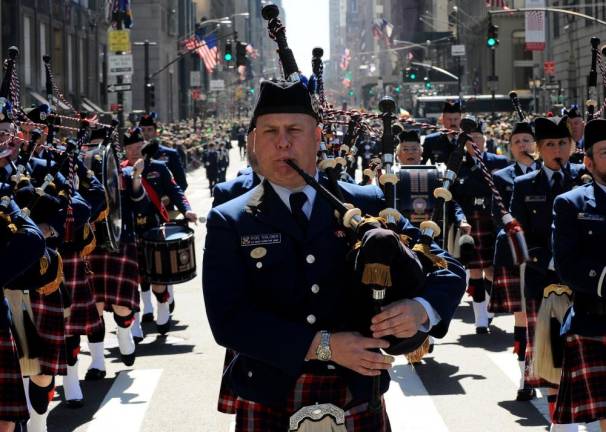The year was 1845. It was the year potatoes turned black and rotted in the ground before the horrified eyes of the Irish people.
O, there were other crops, and livestock too, but they were shipped mostly to the absentee landlords in the land across the Irish Sea.
The landlords exacted a bitter toll, and the Irish paid a bitter price.
A man could get all the nutrients needed from the potato, but one had to eat 14 pounds of them daily to sustain life.
And when the potato died, the Irish did, also.
The Irish population during those years dwindled by more than a quarter. Famine took the most, more than a million souls; many dying along the roadside with green froth on their lips from eating grass.
Those who could, about another million, emigrated in what were referred to as “Coffin Ships” to the New World, a land they called “Americay.”
I’ll sing you a song of days long ago
When the people from Galway and the County Mayo
And all over Ireland came over to stay
and settle a new life in Americay.
(“When New York was Irish,” words and music by Terence Winch)
The Bronx Boy knew them. They were his grandparents.
The boy grew up listening to that peculiar Irish lilt called “Brogues” from so many voices that all were one to him. He grew up Irish- American and learned the songs, learned the dances and made friends with the “Jug of Punch.”
They worked on the subways,
They ran the saloons,
They built all the bridges
And played their own tunes.
(“When New York was Irish,” words and music by Terence Winch)
Yes, they did. Pat McGourty, Pat Slattery and Peter MacSwiggan all drove the trains through the tunnels of New York.
“Big Hughie” Ward was the sandhog that built the bridges.
And my grandfather, John Kelly, was a cop.
All were my friends’ fathers. They are gone now but will forever be remembered by name. They deserve that.
They raised us in their faith, shared with us their stories, educated us, and took us to the parade and to their annual County Balls in Manhattan.
Our mothers taught us how to dance the “Stack o’ Barley” and the “Irish Washerwoman” but we were never good at it.
The Balls have gone now. The Cavan Ball, the Tyrone Ball, along with Webster Hall, have faded in the mist of memory of days long ago.
The Bronx boy remembers the saloons. The old Parkview Bar located under the El on Jerome Avenue was the focal point of socialization. And the trains that rumbled overhead went un-noticed while the beer and conversation flowed.
Every Sunday, right after the one o’clock Mass, the bar would fill up like magic. The funeral parlor was just down the street. A wake was also was an occasion to drop in for a “Jar,” as we called it.
One could buy a Mass Card over the bar for the soul of the departed. Pat O’Hara, the owner, would keep the Mass Card money separately in a cigar box so it wouldn’t be mixed with the beer money.
The beer was 15 cents a glass and Pat would “buy one back” every third beer. Proprieties were always observed ... .
It was there that we learned useful phrases in Gaelic. You wouldn’t be able to pronounce Pog mo thoin or amadon, but give it a try when someone irks you.
Many Sundays in season, the Bronx Boy would travel with a Parkview contingent to Gaelic Park, a ramshackle place lorded over by John “Kerry” O’Donnel.
We watched Gaelic football and hurling matches, a game, it is said, to be played by hooligans, and we learned cheers like ”Up the Field Mayo” before retiring to the bar for another “jar.”
We were immersed in Irish culture, but we got older, married and moved away from the cocoon of our youth.
I look now at photos now brittle with time,
And remember the days when the City was mine.
O how I miss those radiant smiles
And long for the days when we danced in the aisles.
(“When New York was Irish,” words and music by Terence Winch)
It’s all gone now, for us, at least. No one remembers the story of Finn Mac Cool, that great Irishman of song and legend, or remember that Tara was the castle of the High King of Ireland.
Manhattan College owns the hurling field now, and John Kerry O’Donnel’s bar is a memory. The Parkview Bar is a Latin social club, and storefronts are now shuttered at night.
But the memories linger. New people live in the Bronx Boy’s neighborhood but he doesn’t mind. He’s had his time.
Now others will enjoy their time and, like the Irish, eventually fade into the great mosaic we call America.
Slainte!
John Klumpp
Sparta
